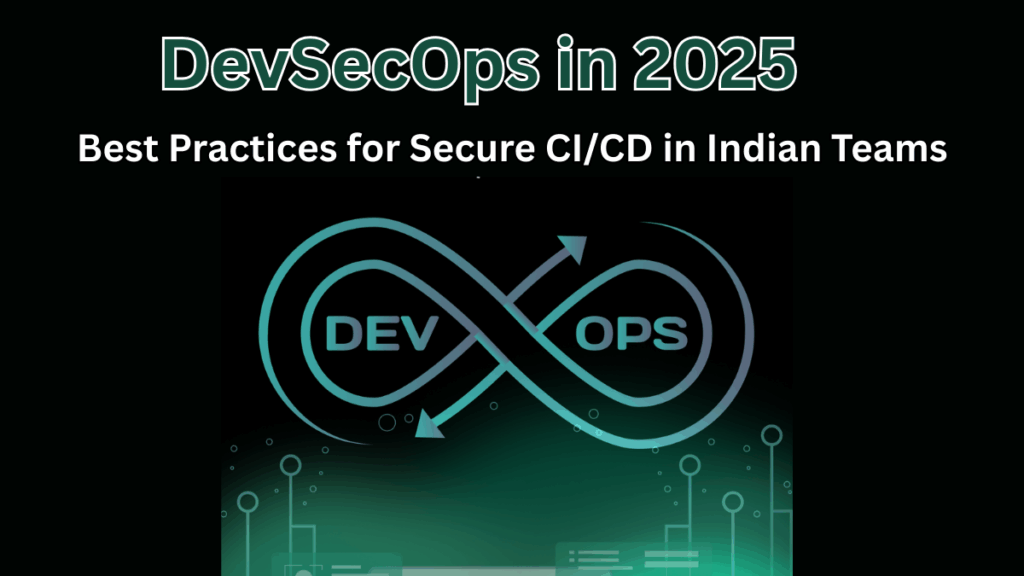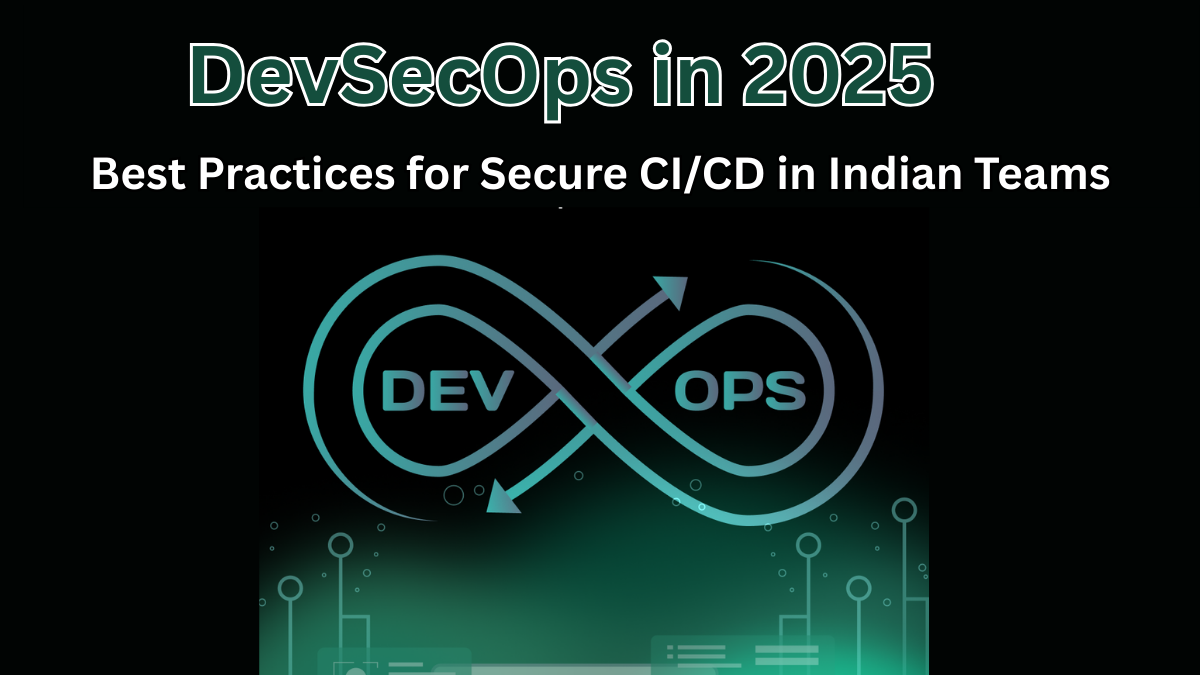In today’s fast-paced software landscape, security can no longer be an afterthought. DevSecOps integrates security directly into the CI/CD pipeline, ensuring that your applications are safe from the ground up. For Indian teams, adopting DevSecOps Best Practices 2025 can drastically improve development speed while maintaining top-notch security.

Why DevSecOps Matters in 2025
As Indian software teams scale, the pressure to deliver secure applications quickly has never been higher. Here’s why DevSecOps is essential:
-
Shift-left security: Detect vulnerabilities early in development
-
Faster releases: Integrating security into CI/CD reduces delays caused by last-minute fixes
-
Regulatory compliance: Ensure adherence to Indian IT and data protection standards
-
Team collaboration: Developers, security experts, and operations work in sync
Core CI/CD Security Principles for Indian Teams
Implementing CI/CD security is the backbone of effective DevSecOps. Indian teams should focus on:
-
Automated Security Testing: Embed tools like SAST, DAST, and dependency scanning in CI pipelines
-
Secrets Management: Use secure vaults for API keys, tokens, and passwords
-
Continuous Monitoring: Track code changes and deployment vulnerabilities in real-time
-
Immutable Infrastructure: Avoid configuration drift to minimize attack surfaces
DevSecOps Best Practices 2025 for Indian Teams
Here’s a snapshot of actionable best practices:
| Practice | Description | Benefits |
|---|---|---|
| Shift-left Testing | Integrate security tests at the earliest stages of development | Early vulnerability detection |
| Automated CI/CD Security | Incorporate SAST, DAST, and container scanning | Reduces manual errors and speeds up deployment |
| Infrastructure as Code (IaC) | Manage infrastructure via code for repeatability | Minimizes human error and enhances consistency |
| Secrets Management | Store sensitive data securely using vaults | Prevents leaks and unauthorized access |
| Continuous Compliance | Embed regulatory checks in pipelines | Ensures legal and security compliance |
Tips for Indian Teams Implementing DevSecOps
-
Train Your Team: Security awareness is crucial for developers and operations teams
-
Use Open-Source Tools Wisely: Tools like Jenkins, GitLab CI, and OWASP ZAP are widely adopted in Indian teams
-
Monitor Third-Party Dependencies: Many vulnerabilities come from external libraries
-
Adopt a Culture of Security: Encourage collaboration between developers and security experts
Challenges Indian Teams May Face
Even with best practices, some hurdles exist:
-
Limited awareness about CI/CD security in smaller startups
-
Lack of budget for advanced security tools
-
Cultural resistance to integrating security in daily development workflows
Overcoming these challenges requires training, proper tooling, and leadership buy-in.
FAQs on DevSecOps Best Practices 2025
Q1: What is the main difference between DevOps and DevSecOps?
A: DevOps focuses on speed and efficiency in software delivery, whereas DevSecOps integrates security into every stage of development, making applications more resilient.
Q2: How can Indian teams ensure CI/CD security in 2025?
A: By implementing automated security testing, continuous monitoring, secrets management, and adopting a shift-left approach to detect vulnerabilities early.
Q3: Are open-source tools sufficient for DevSecOps?
A: Yes, when used correctly. Tools like Jenkins, GitLab CI/CD, OWASP ZAP, and Trivy can provide robust security if integrated into pipelines effectively.
Q4: How do I convince my team to adopt DevSecOps practices?
A: Highlight benefits like faster releases, reduced vulnerabilities, and regulatory compliance. Start with small, measurable changes to gradually build a security-first culture.
Click here to learn more
